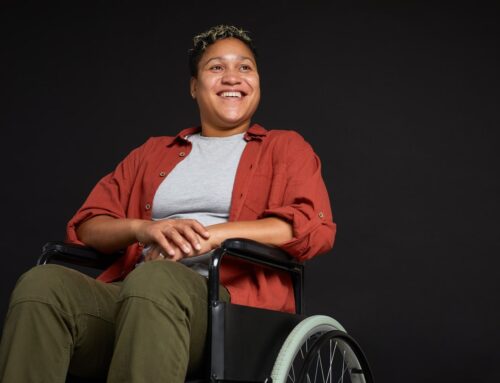
A Guide for Setting up an Enemeez® Trial at Your Healthcare Facility
Constipation is the most common GI complaint in the primary, acute, and long-term care setting in the US.
Spinal cord disorders and the associated neurological damage results in impaired voluntary and reflex activity with altered bowel transit and impaired storage/evacuation mechanisms. Ninety-five percent of SCI patients require at least one therapeutic intervention to initiate defecations.2
Secondary Complications of Incontinence
Incontinent patients have a 22-30% higher risk of developing pressure ulcers3
Both fecal and urinary incontinence increases moisture, but fecal incontinence is hypothesized to act as a more potential risk factor for skin breakdown than urinary incontinence.4
Fecal incontinence represents a major risk to perianal skin integrity and healing of perineal wounds.5
Pressure ulcers were more prevalent (12%) among residents who had any recent bowel or bladder incontinence than among those who were not incontinent (7%)6.
Enemeez® Trial Advantages for Your Facility
Conducting a trial of Enemeez® at your facility can have financial, workplace, and quality care benefits.
Financial – Enemeez® is relatively similar to bisacodyl suppositories in product pricing, and trials produce significant ancillary advantages, such as work efficiency and staff satisfaction. Due to the reduction of episodes of incontinence and mucosal discharge associated with bisacodyl-based suppositories, the facility benefits from reduced use of chuck pads, and the volume of gown and laundry services needed.
Workplace Satisfaction and Staff Turnover– The results of a trial can be used to gauge internal satisfaction addressing this chronic problem.
Improved Quality – Enemeez® innovative use will lead to improvements in skilled care and quality improvement within the facility.
Positive Results from Enemeez® Trial Pilot Study
There are two important questions to consider when evaluating a bowel care trial at your facility:
- Does the new product provide cost saving?
- Does the product reduce time spent on bowel care by staff and patients?
For an example, we can look at a pilot study of Enemeez® that took place at an inpatient spinal injury unit in 2010.
The pilot study offered Enemeez® as an alternative to bisacodyl suppositories in selected patients, and determined the impact on nursing/CNA time required for prolonged bowel care, staff and patient satisfaction, and side effects.
This pilot study measured bowel care events, duration, and occurrence of incontinence recorded among patients receiving standard Bisacodyl suppository for bowel care as a baseline comparison to Enemeez®.
The results of the study revealed the following:
- Of the 48 Bisacodyl bowel care events recorded, 20 episodes of fecal incontinence were observed and the mean duration of bowel care was 118 minutes.
- Of the 98 Enemeez® bowel care events recorded, fecal incontinence was reduced to 3 episodes and the mean duration of bowel care was reduced to 75 minutes.
The results demonstrated that Enemeez® was less labor-intensive, and resulted in fewer nursing hours devoted to a patient’s bowel program. This also leads to reduced cost of attended care needed for a patient at the time of discharge.
For an overview of admission, discharge & follow-up FIM rating scale view this graphic from MedScape: https://emedicine.medscape.com/article/317865-overview
Better FIM scores and better outcomes for patients can translate into better reimbursement for your facility. Because ultimately, what is good for the patient is good for your facility, too.
How to Conduct a Trial at Your Healthcare Facility
To effectively conduct a trial, it’s important to complete pre-trial patient evaluations, pre-trial staff education and determine measures and expectations.
Pre-Trial Patient Evaluation and Proficiency
A minimum of 20 patients during a four or eight week period is suggested by the manufacturer. A pre-trial patient evaluation should be completed and charted prior to admitting a patient into a trial, and the evaluation shall contain:
- Identification of patient’s bowel care regimen prior to stay at facility.
- Complications with current bowel care regimen while at the facility.
- Prior four weeks laxative usage.
- Evaluate skin care quality issues.
- Number of episodes of incontinence during the previous four weeks.
- Length of time lost in rehab due to incontinence episodes from the prior four weeks. Prior four weeks average length of time per week spent on bowel care needs.
Once a patient’s eligibility for the trial has been determined, it’s important to consider the following as well:
- Patient is at least 18 years of age.
- Can communicate effectively with healthcare providers and nursing staff.
- Has been Inpatient at your facility for 4-8 weeks.
- Patient has signed a consent form to participate.
- High narcotic use for pain management.
- Patient has a need for a regulated bowel care regimen, including one of more of the following:
- Has had one impaction in the last 30 days.
- Consistently needs further intervention after administered oral therapy.
- Does not evacuate without intervention.
- Consistently requires Level 3 protocol laxative therapy, further followed by episodes of diarrhea.
- Has a spinal cord injury or is a MS patient.
- Patient suffers with a Neurogenic Bowel.
Pre-Trial Staff Education
It’s important to provide an in-service for all healthcare workers involved with the trial prior to starting the trial. Ensure all staff are familiar with the products they are currently using, the proper mechanism of action, and are educated on the proper use of Enemeez®
Measures and Expectations
- Time spent from insertion of Enemeez® to completion of bowel care.
- Did patients experience Autonomic Dysreflexia?
- Number of episodes of incontinent stools or accidents.
- Number of episodes of mucosal discharge.
- Time spent providing digital stimulation by nursing staff.
- Length of time spent by nursing staff on cleaning/changing patients due to incontinence.
- Number of time and length of time incontinence interrupted rehabilitation, physical therapy, etc.
- Additional pads and clothing that were required to be used due to an incontinence episode.
- Overall nursing/CNA satisfaction, ease of use and patient satisfaction.
Using Enemeez® Products for Your TrialNOTE: Enemeez® is not a suppository, stimulant irritant, large volume enema, or a lubricant, saline, or stimulant laxative. |
| The Enemeez® mini enemas deliver 283mg of docusate sodium and functions as a stool softener hyper-osmotic laxative by drawing water into the bowel from surrounding body tissues, softening the stool and promoting a bowel movement, usually within 2-15 minutes.
Enemeez® Plus contains an additional 20mg of benzocaine, assisting in the anesthetization of the rectum and lower bowel. The formulation was developed for patients who experience hemorrhoids, fissures, or painful bowel movements. No waiting overnight. Help your patients get on with their lives! |
>> REQUEST A TRIAL FOR YOUR FACILITY <<
Disclaimer: The material contained is for reference purposes only. Alliance Labs, LLC and Summit Pharmaceuticals do not assume responsibility for patient care. Consult a physician prior to use. Copyright 2020 Summit Pharmaceuticals and Alliance Labs, LLC.
Sources:
- Stiens, et al., 1997; Cosman, et al., in Whiteneck et al., 1993; Consortium for Spinal Cord medicine Clinical Practice Guideline on Neurogenic Bowel, 2002
- Regan et al., Arch Phys Med Rehabil 2009;90:213-231
- S. Foxley & R. Baadjies; Incontinence-associated with dermatitis in patients with spinal cord injury; British Journal of Nursing Vol 18, No. 12.
- Shannon ML, Skorga P. Pressure ulcer prevalence in two general hospitals, Decubitus. 1989;2: 38-43.
- Ousey, Karen and Gillibrand, Warren P. (2010) Using faecal collectors to reduce wound contamination. Wounds UK, 6 (1). Pp. 86-91.
- NCHS Data Brief, No. 14 February 2009. Pressure Ulcers Among Nursing Home Residents: United States, 2004 Eurice Park-Lee, PHD., and Christine Caffrey, PhD., Division of Health Care Statistics. ENZ010.R1 11.25.19




![[Live Webinar] Neurogenic Bowel Dysfunction in Multiple Sclerosis](https://www.questhealthcare.net/wp-content/uploads/2025/02/325-Quest-Healthcare-Speaker-Session-1-500x383.png)


